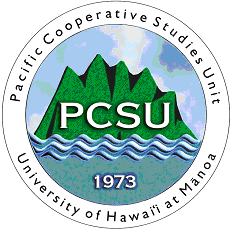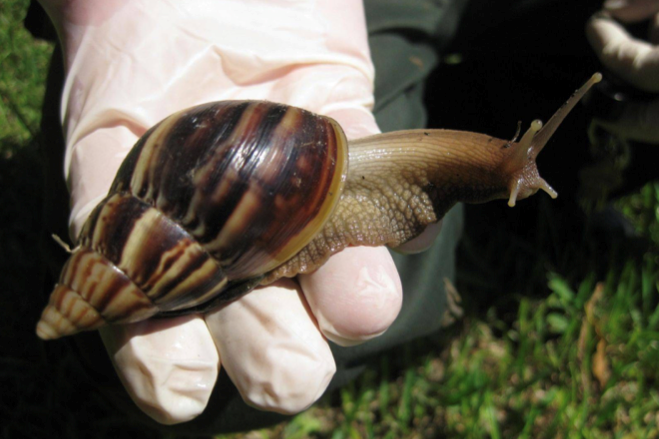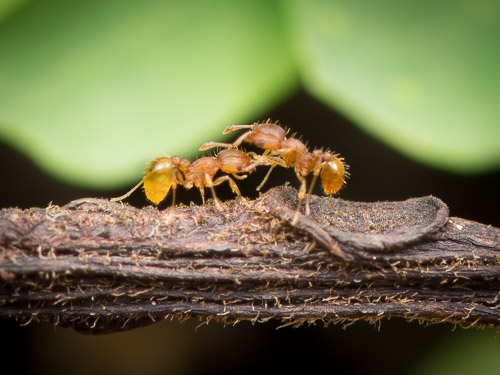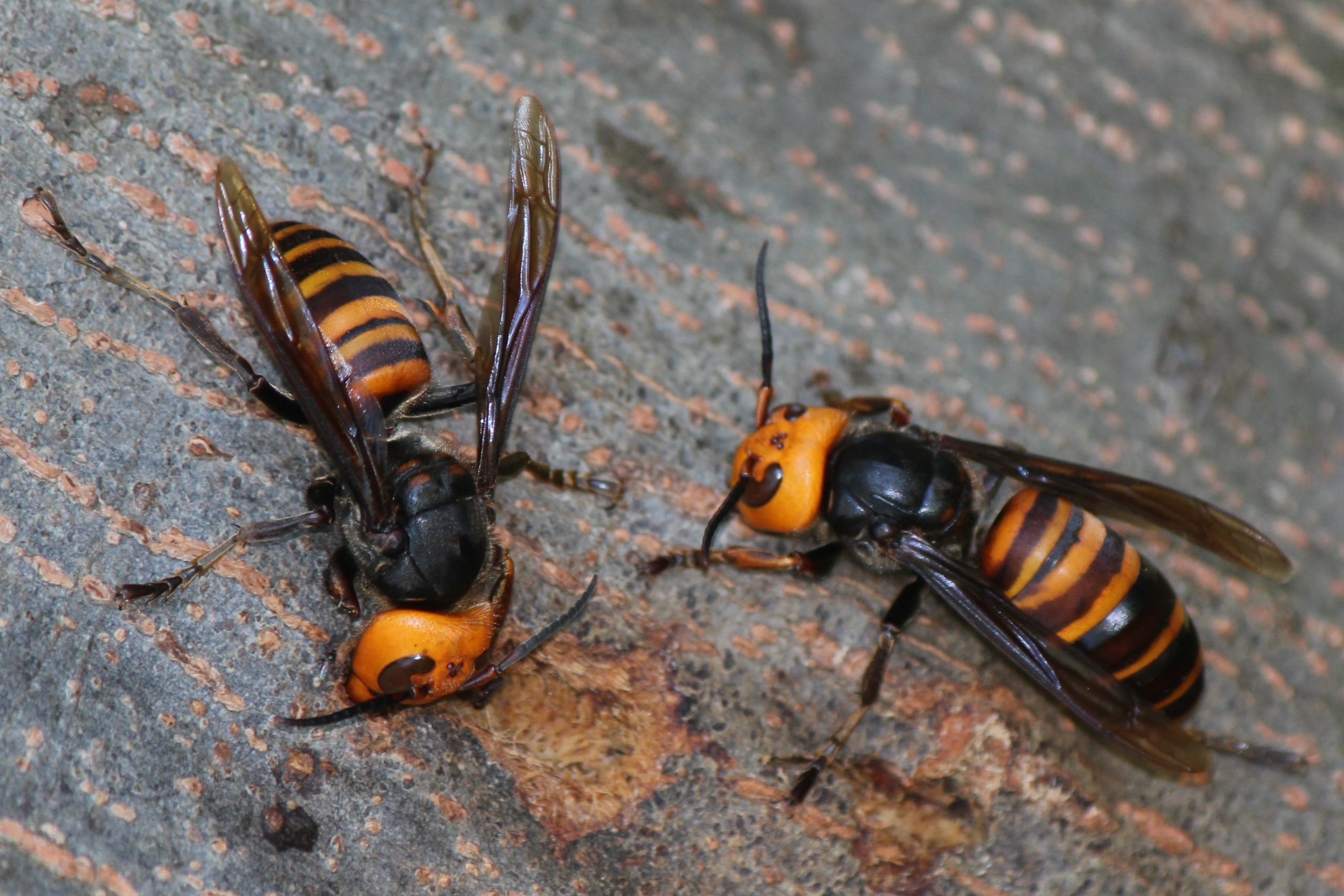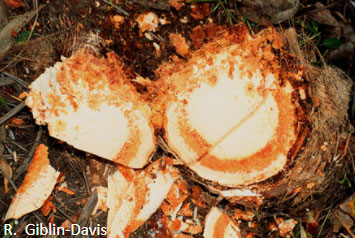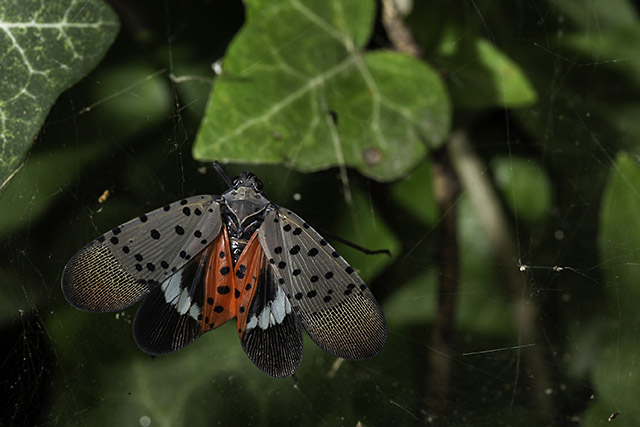Common name: Red palm weevil
Scientific name: Rhynchophorus ferrugineus
Status in Hawaii: Not known to be present in Hawaii
A species of snout beetle that is known as the most destructive palm pest in the world.

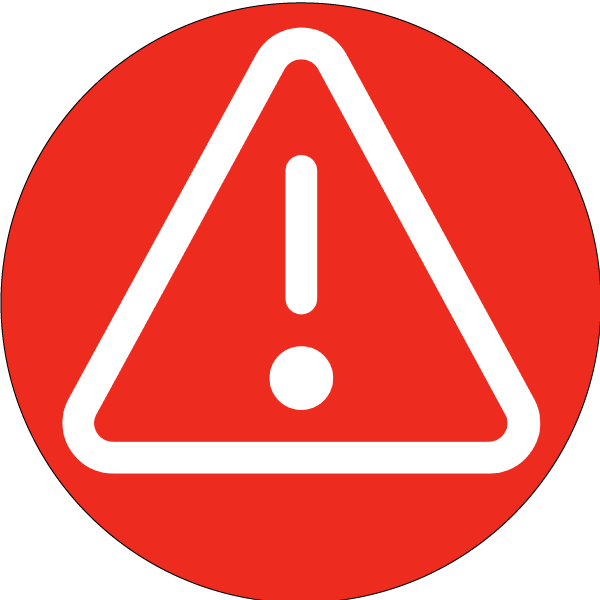
Impacts
- Most destructive palm pest in the world especially to coconut, date, sage, and oil palms.
- Huge risk to Hawaii’s native and endemic palm species.
- Adults can vector a nematode which causes red-ring disease of palms (although the two species have not yet been found to occur simultaneously).
- Damage could lead to the palm falling over.
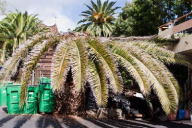
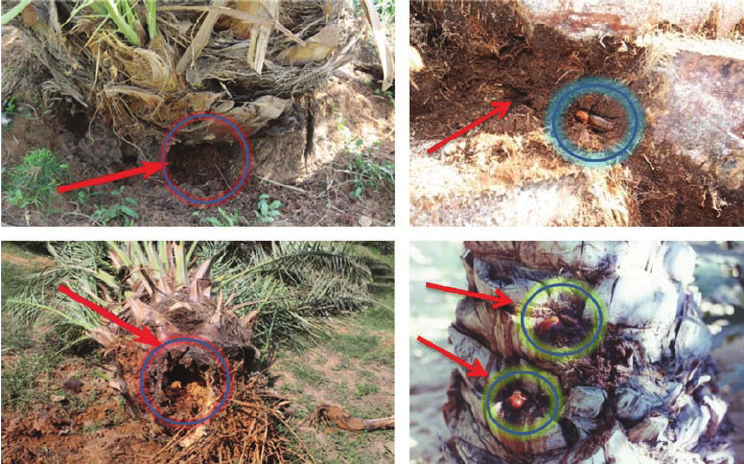

Identification
- Egg: Whitish-yellow, smooth, shiny, cylindrical w/rounded ends.
- Larva: Creamy white to ivory, grow up to about 5 cm (2 in).
- Adult: Avg 3.8 cm (1.5 in) long, red to reddish brown and black with variable patterns. Adults fly.
- Larvae tunnel and feed from the top of a palm tree through the trunk; damage is often undetected until the tree dies and the crown topples.
- Feeding debris (frass) and thick white fluid may ooze from entry holes.
- Gnawing sounds can be heard within a tree when large numbers of larvae are feeding.
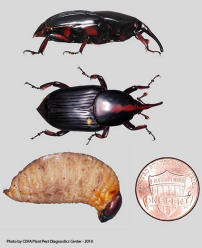
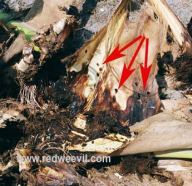

Vectors/Commodities
- Palm plants. Spends most of its life and all stages within the tree.
- May also move short distances as an adult by flying.
- Can also be found in leaf litter around the base of palm or green waste pile.

Distribution
- Native to SE Asia
- Distribution: Africa, Asia, Europe, Caribbean, Oceania

Best Management Practices
- This species is not found in Hawaii. Prevention and early detection is required to prevent new incursions and establishment.
- Consider sourcing options and pest distribution when purchasing plants.
- BOLO: Be on the lookout! Carefully inspect palms for symptoms:
- Larvae tunnel and feed from the top of a palm tree through the trunk; damage is often undetected until the tree dies and the crown topples.
- Feeding debris (frass) and thick white fluid may ooze from entry holes.
- Gnawing sounds can be heard within a tree when large numbers of larvae are feeding.
- Report any suspect pests to www.643pest.org.
Other Nursery Pests
PEST PREVENTION TRAINING
An advanced education program for those on the front lines protecting Hawaii from invasive species.
Contact your local Invasive Species Committee to schedule a training for your team. Learn more
This material was made possible, in part, by a Cooperative Agreement from the United States Department of Agriculture’s Animal and Plant Health Inspection Service (APHIS). It may not necessarily express APHIS’ views.


